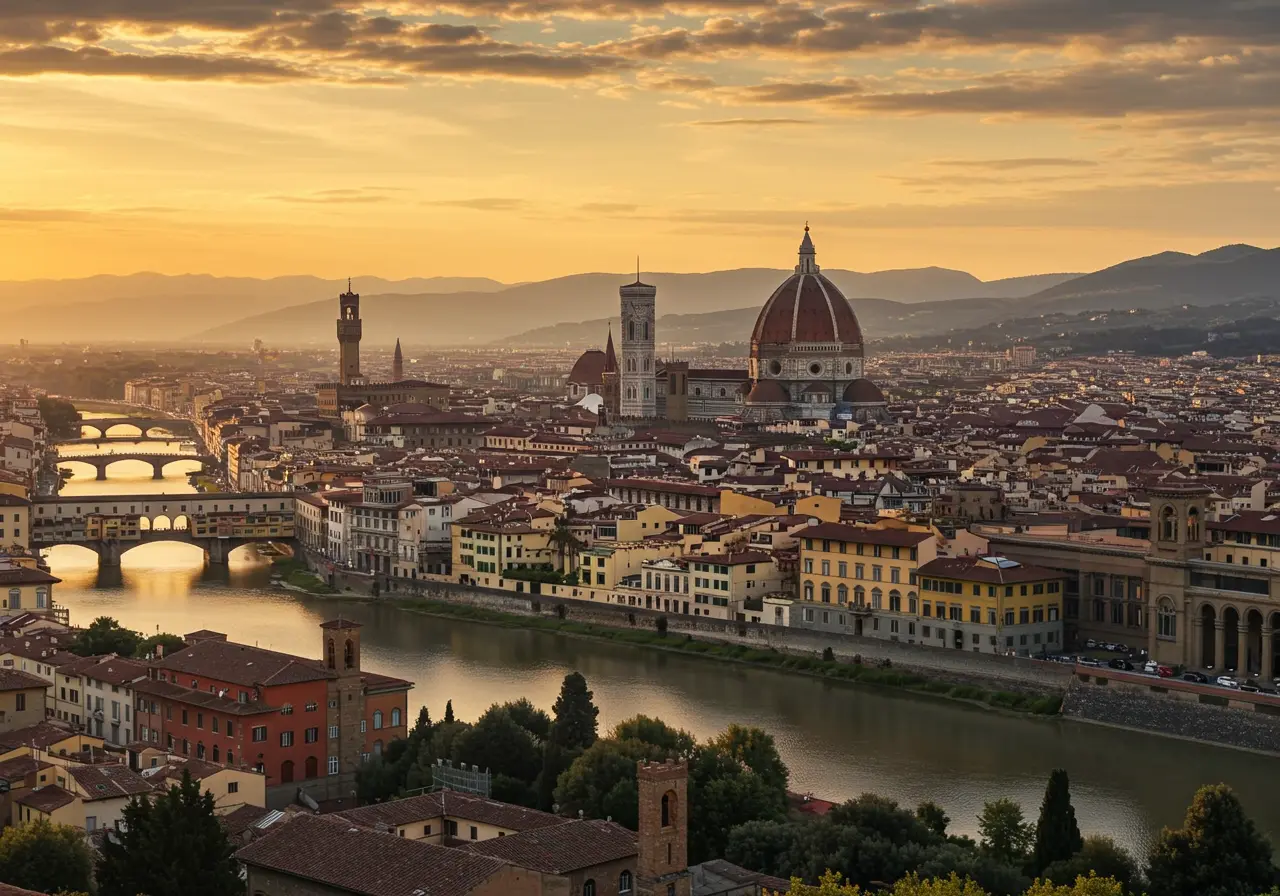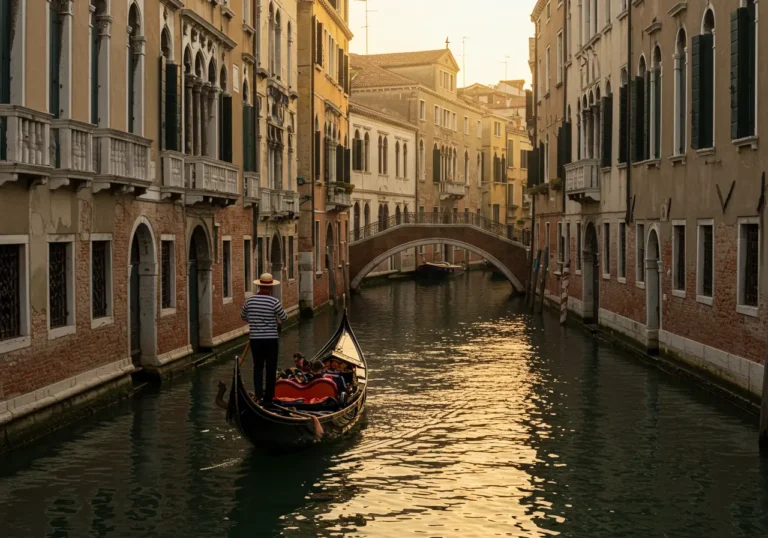Top 10 Places to Visit in Florence
Introduction
Overwhelmed by planning the perfect Florence itinerary? With countless Renaissance masterpieces, architectural marvels, and cultural treasures packed into this compact city, deciding where to spend your precious time can feel daunting.
This comprehensive guide reveals Florence’s must-see destinations that will transform your visit into an unforgettable journey through art, history, and Italian culture. As a travel strategist who has spent years exploring Florence’s hidden corners and world-famous landmarks, I’ve curated the essential experiences that capture the true essence of this Renaissance jewel.
You’ll discover the top 10 places to visit in Florence, insider tips for maximizing your time, practical planning advice, and suggested itineraries that cater to every type of traveler. Whether you’re an art enthusiast, history buff, or simply seeking to immerse yourself in Florentine culture, this guide ensures you won’t miss a single highlight.
Table of Contents
Why Visit Florence
Florence stands as the undisputed birthplace of the Renaissance, offering an unparalleled concentration of artistic and cultural treasures that shaped Western civilization.
Key reasons to explore Florence:
- Offers world-class art collections – Home to Michelangelo’s David, Botticelli’s Birth of Venus, and countless masterpieces in world-renowned museums
- Compact and walkable city center – Easy navigation between major attractions, with most landmarks within comfortable walking distance
- Perfect for art lovers, history enthusiasts, and culture seekers – Satisfies diverse interests from Renaissance art to architectural marvels and culinary traditions
Choosing the Right Destination Within Florence
Understanding Florence’s distinct neighborhoods and attractions helps you prioritize based on your interests and travel style.
Best Areas for First-Time Visitors
The Historic Center (Centro Storico) contains the essential Florence experience with the Duomo, Uffizi Gallery, and Ponte Vecchio all within walking distance.
Art and Culture Hotspots
The Oltrarno district offers authentic artisan workshops, the magnificent Pitti Palace, and stunning sunset views from Piazzale Michelangelo.
Hidden Gems Beyond the Crowds
Explore the San Lorenzo area for local markets and the often-overlooked Bargello Museum, or venture to Santa Croce for a more intimate Renaissance experience.
Planning & Preparation
Travel Essentials
Pack comfortable walking shoes as Florence’s cobblestone streets and marble museum floors demand proper footwear. Download offline maps and purchase a Firenze Card for skip-the-line access to major attractions. Consider bringing a portable phone charger and small daypack for museum visits.
Accommodation Tips
Stay in the Historic Center for proximity to major sights, though expect higher prices. Oltrarno offers charming boutique hotels with authentic character. Book accommodations near the Duomo or Santa Maria Novella train station for convenience, or choose family-run pensiones for a more intimate Florence experience.
Budgeting Basics
Allocate €15-25 daily for meals at local trattorias, €15-20 per major museum entrance, and €10-15 for transportation if staying outside the center. Budget an additional €50-100 for shopping in Florence’s renowned leather markets and artisan workshops.
Top 10 Places to Visit in Florence
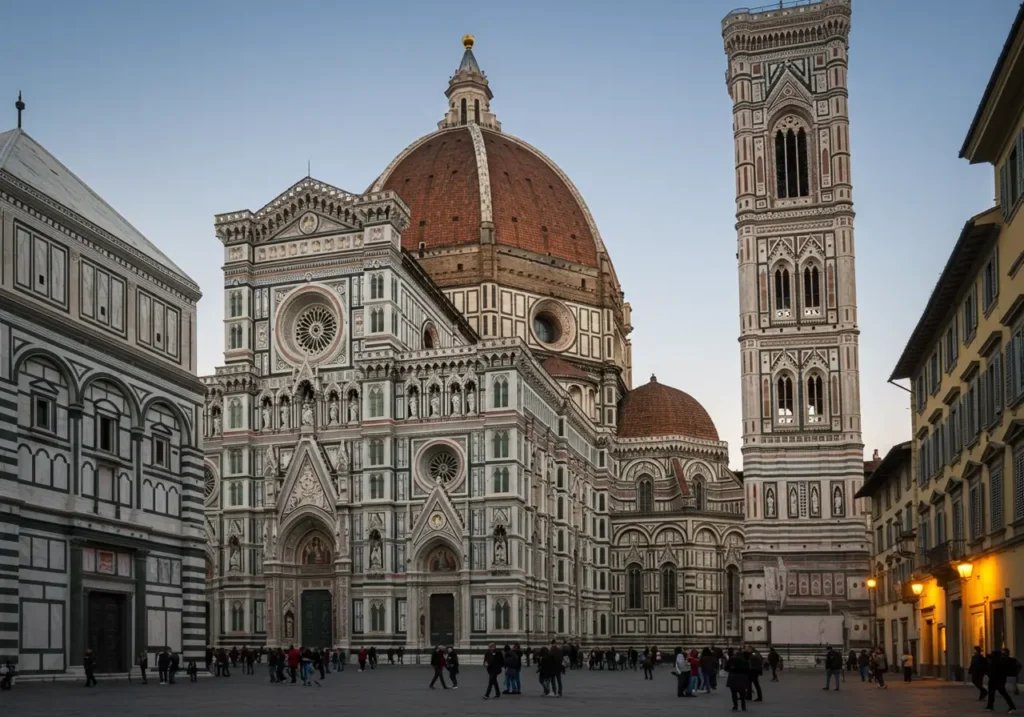
Cathedral of Santa Maria del Fiore (Duomo)
Florence’s magnificent cathedral dominates the city skyline with Brunelleschi’s revolutionary dome, a masterpiece of Renaissance engineering. The intricate Gothic Revival facade, completed in the 19th century, showcases stunning pink, white, and green marble patterns. Climb the 463 steps to the dome’s top for breathtaking panoramic views of the Tuscan countryside. The cathedral’s interior features beautiful frescoes by Vasari and Zuccari depicting the Last Judgment. Don’t miss the adjacent Baptistery with its famous bronze doors, including Ghiberti’s “Gates of Paradise.”
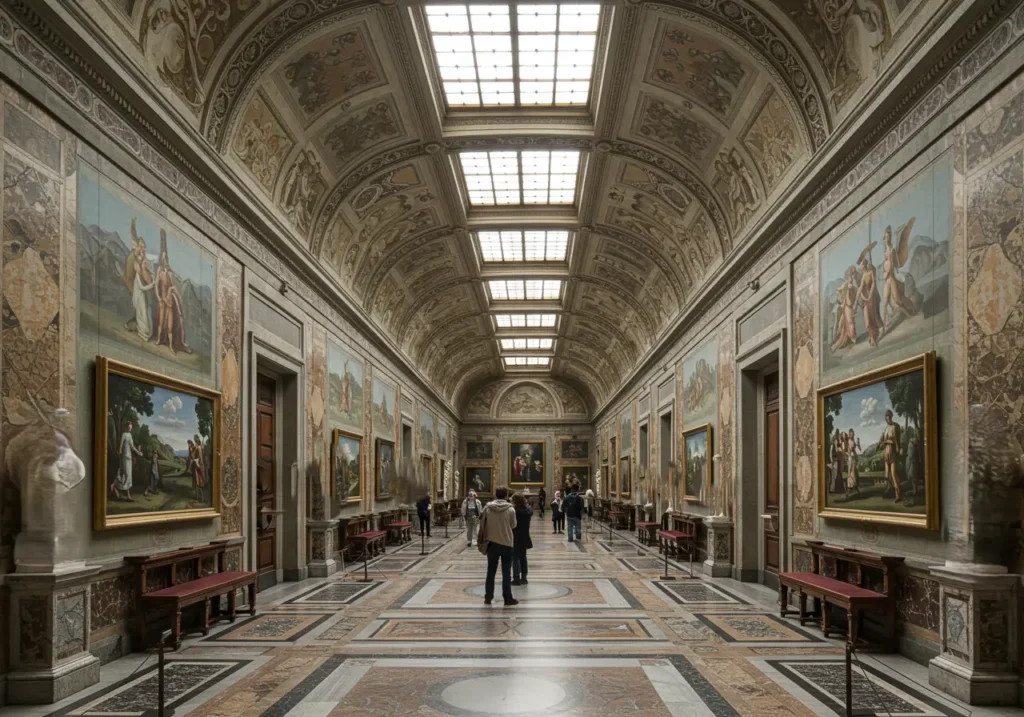
Uffizi Gallery
Housing the world’s finest collection of Renaissance art, the Uffizi Gallery displays masterpieces by Leonardo da Vinci, Michelangelo, Botticelli, and Raphael. Book tickets months in advance or purchase skip-the-line passes to avoid hours-long queues. The museum’s corridors themselves are architectural marvels, featuring ancient Roman sculptures and offering glimpses of the Arno River through strategically placed windows.
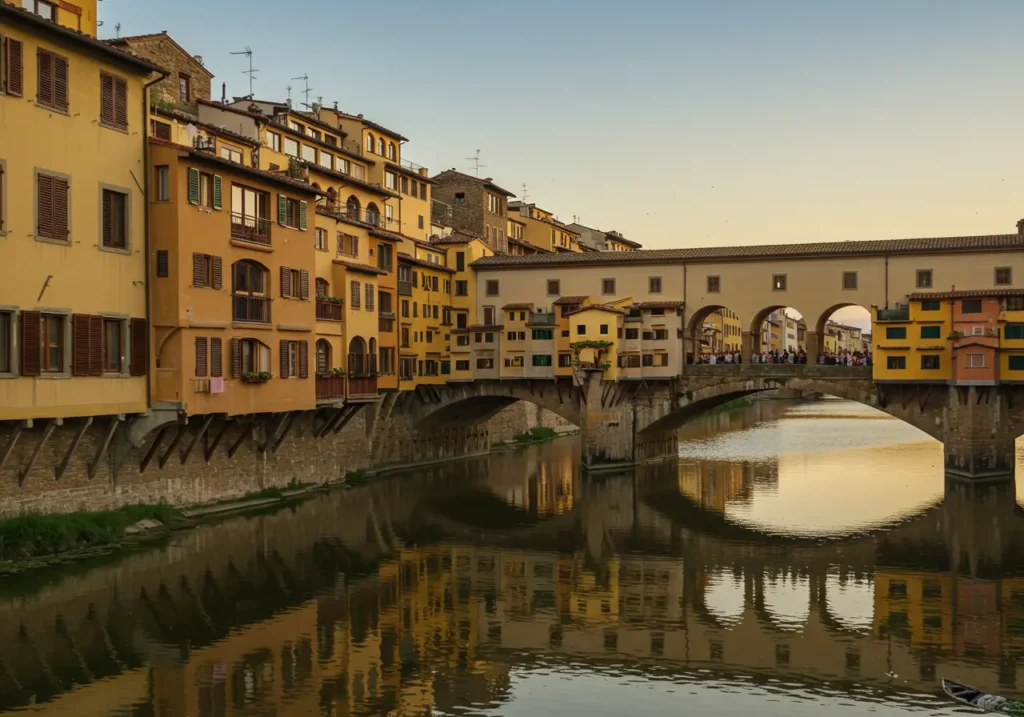
Ponte Vecchio
This medieval bridge spans the Arno River and represents one of Florence’s most iconic landmarks, famous for its jewelry shops built directly into the bridge structure. Originally home to butchers and fishmongers, the bridge now houses gold merchants and jewelers in tiny shops that seem to hang over the water. The Vasari Corridor runs above the shops, historically allowing the Medici family to travel between their residences unobserved. Sunset provides the most magical lighting for photographs, when the bridge’s reflection shimmers in the Arno. The bridge survived World War II as the only Florentine bridge not destroyed by retreating German forces.
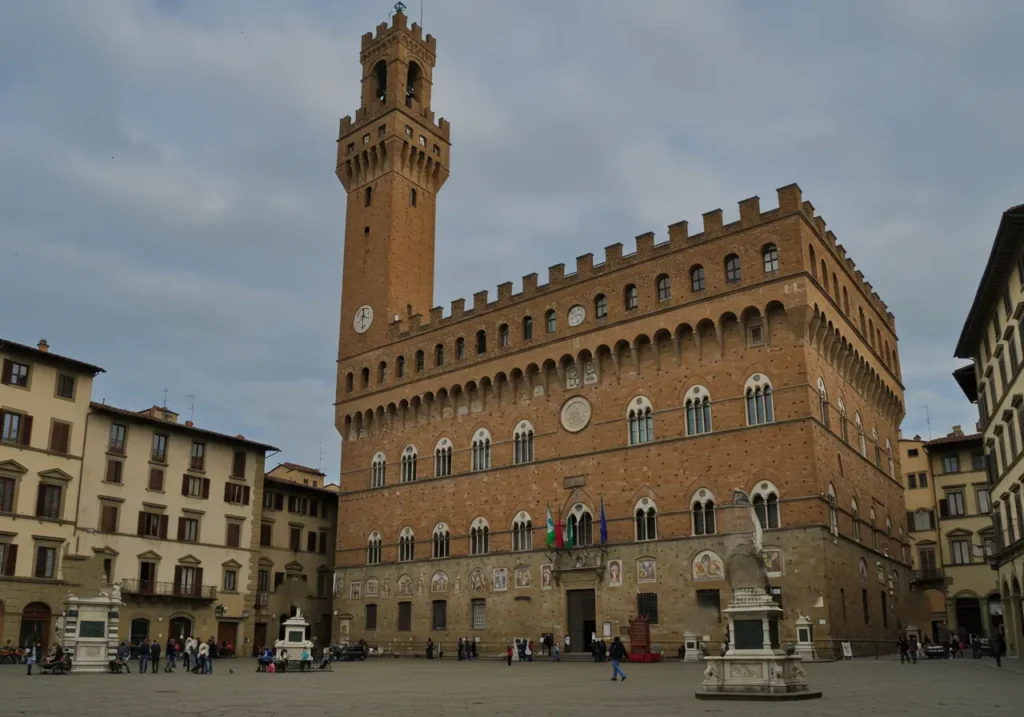
Palazzo Vecchio
This imposing fortress-palace serves as Florence’s town hall and houses remarkable Renaissance chambers decorated by some of Italy’s greatest artists. The building’s crenellated tower reaches 94 meters high, offering spectacular city views for those willing to climb. Inside, the Salone dei Cinquecento features massive frescoes by Vasari depicting Florentine military victories. The palace’s secret passages and hidden chambers reveal stories of political intrigue from the Medici era. Cosimo I’s private apartments showcase exquisite Renaissance furnishings and artwork, providing insight into 16th-century aristocratic life.
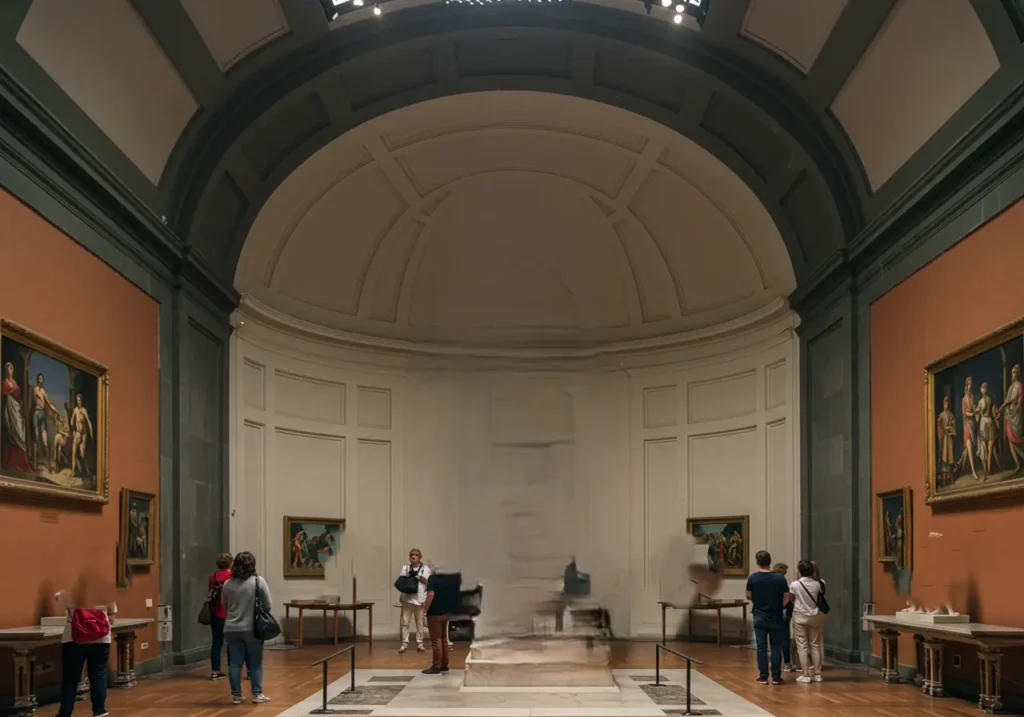
Galleria dell’Accademia (Michelangelo’s David)
Home to Michelangelo’s colossal statue of David, this museum showcases the pinnacle of Renaissance sculpture alongside other important works by the master artist. The 17-foot marble David, completed in 1504, demonstrates Michelangelo’s extraordinary skill in capturing human anatomy and emotional intensity. The gallery also displays Michelangelo’s unfinished “Prisoners” sculptures, offering fascinating insights into his artistic process. The museum houses an impressive collection of musical instruments and works by other Florentine artists.
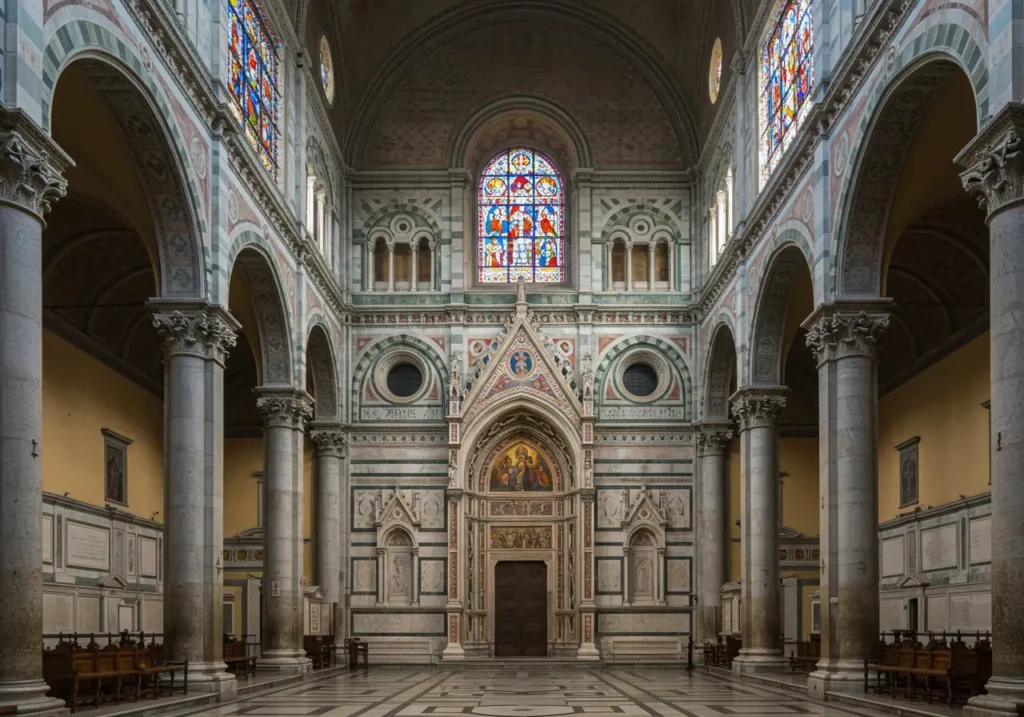
Basilica of Santa Croce
Known as the “Westminster Abbey of Florence,” this Franciscan church houses tombs and frescoes of Italy’s greatest cultural figures, including Michelangelo, Galileo, and Machiavelli. The church’s stark Gothic interior creates a contemplative atmosphere perfect for appreciating these artistic treasures. The adjacent museum contains Donatello’s wooden crucifix and other Renaissance masterpieces. The basilica’s leather school, still operated by Franciscan monks, offers authentic Florentine craftsmanship demonstrations.
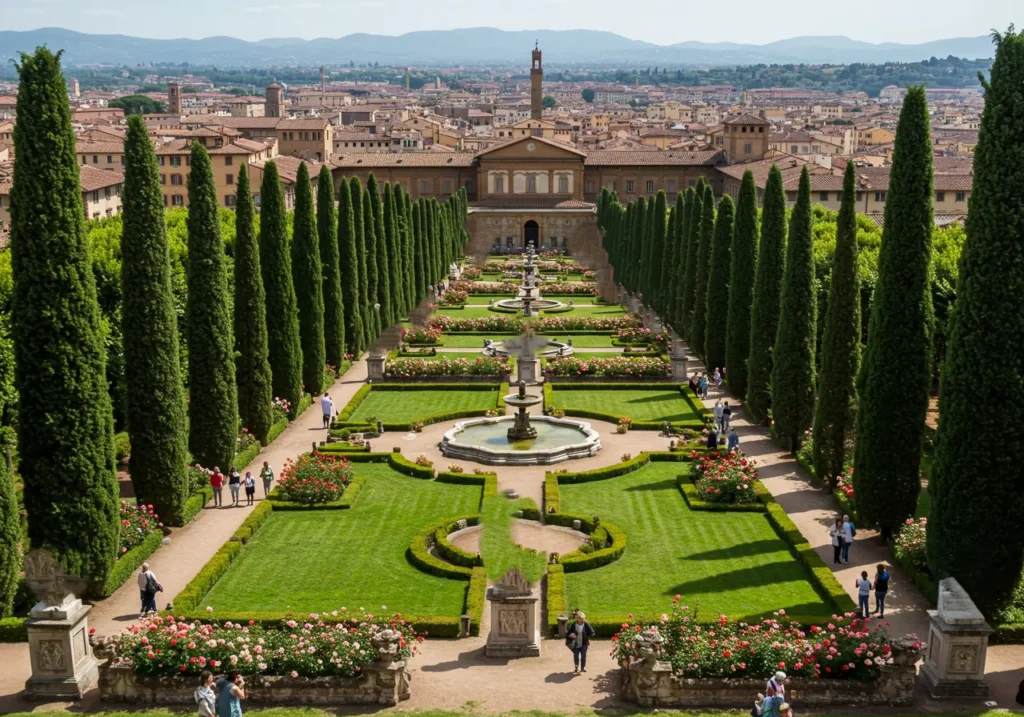
Boboli Gardens
These expansive Renaissance gardens behind the Pitti Palace offer a peaceful escape from Florence’s bustling streets while showcasing magnificent landscaping and sculpture collections. The gardens feature geometric Italian-style layouts with tree-lined avenues, hidden grottos, and panoramic terraces overlooking the city. Ancient Roman statues intermingle with Renaissance and Baroque sculptures throughout the pathways. The Isolotto, an artificial island with lemon trees and fountains, provides a tranquil centerpiece. From the gardens’ highest points, visitors enjoy spectacular views of Florence’s dome and the surrounding Tuscan hills, making it perfect for sunset photography.
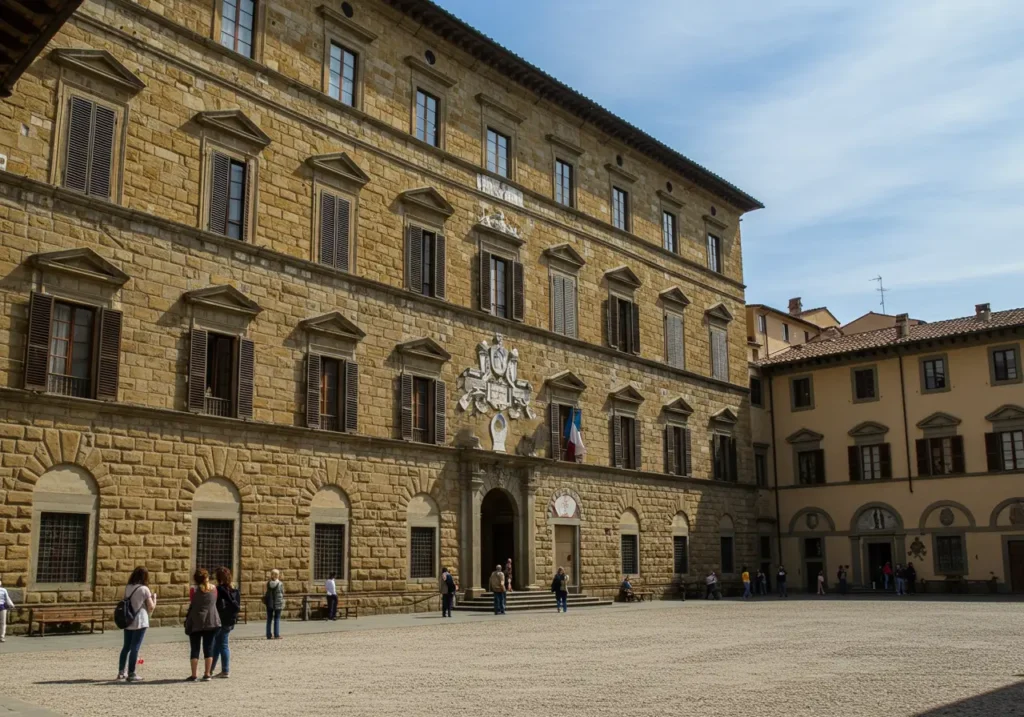
Pitti Palace
This massive Renaissance palace, once home to the powerful Medici family, now houses several world-class museums showcasing royal apartments, Renaissance art, and decorative arts. The Palatine Gallery contains masterpieces by Raphael, Titian, and Rubens displayed in sumptuously decorated rooms that maintain their original palatial atmosphere. The palace also houses the Silver Museum, showcasing extraordinary craftsmanship in precious metals and gemstones. The building’s imposing facade and massive scale demonstrate the incredible wealth and power of Renaissance Florence’s ruling families.
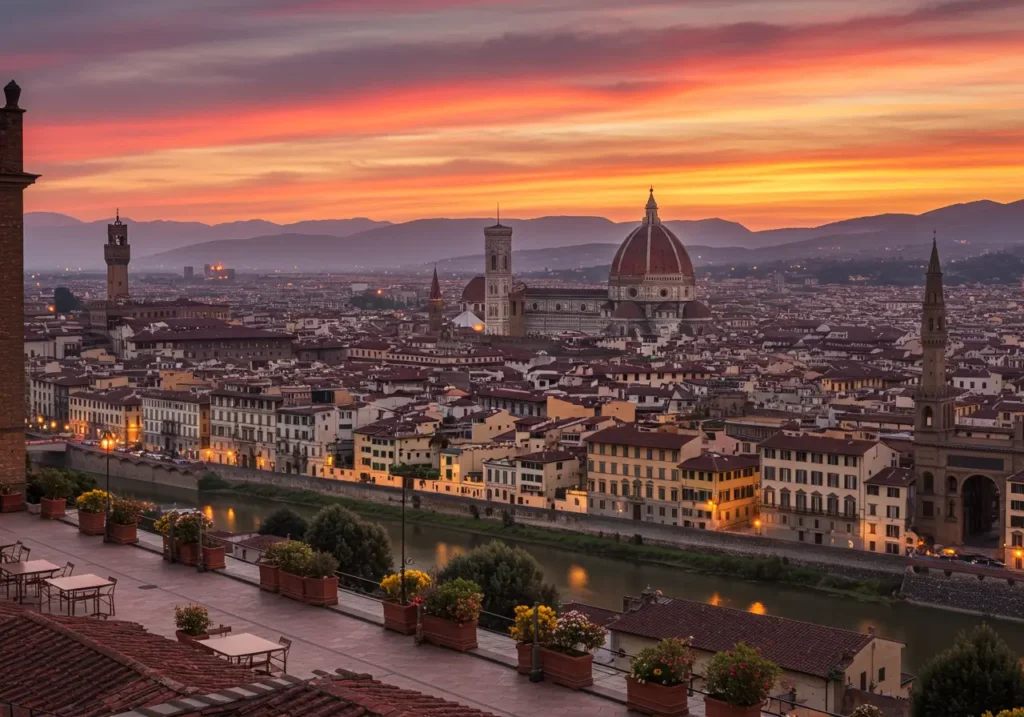
Piazzale Michelangelo
This elevated square provides the most spectacular panoramic views of Florence, making it the city’s premier sunset destination and photography spot. Located on the Oltrarno hillside, the piazzale offers unobstructed views of the Duomo, Palazzo Vecchio, and the entire historic center spread along the Arno River. A bronze replica of Michelangelo’s David stands at the center, though the real attraction is the breathtaking vista. The climb to reach this viewpoint, either by foot or bus, rewards visitors with Instagram-worthy photographs and romantic sunset moments. Local vendors sell souvenirs and refreshments, while nearby San Miniato al Monte church offers additional cultural exploration.
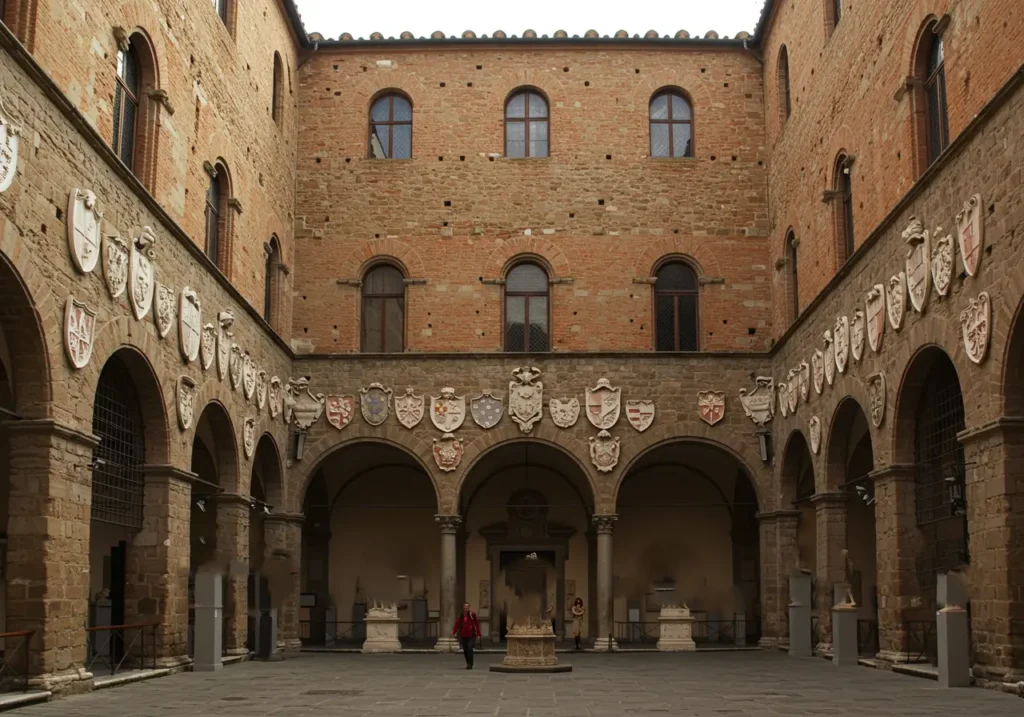
Bargello Museum
Often overlooked by tourists, this former fortress and prison houses the world’s finest collection of Renaissance sculpture in an atmospheric medieval setting. The museum displays early works by Michelangelo, including his “Bacchus” and “Tondo Pitti,” alongside masterpieces by Donatello and other sculptural giants. Donatello’s bronze David, the first freestanding nude sculpture since antiquity, represents a revolutionary moment in art history. The museum’s manageable size and fewer crowds allow for intimate appreciation of these incredible masterpieces.
Travel Tips
Avoiding Travel Stress
Book museum tickets online weeks in advance, especially for the Uffizi Gallery and Accademia during peak season. Visit major attractions early morning or late afternoon to avoid crowds. Travel between October and March for cooler weather and fewer tourists, though some attractions may have reduced hours.
Tool Recommendations
Download Google Maps offline before arriving to navigate Florence’s winding medieval streets without data usage. Use the official Firenze Card app to track included attractions and plan efficient routes. Consider the Trenitalia app for day trips to nearby Tuscan towns like Siena or Pisa.
Safety & Storage
Keep valuables in a money belt as pickpockets target tourist areas around the Duomo and Ponte Vecchio. Use luggage storage services near Santa Maria Novella station if visiting between hotel check-ins. Stay aware of your surroundings in crowded areas and avoid displaying expensive jewelry or electronics openly.
Experience Variations
Luxury Travel
Indulge in Michelin-starred dining at restaurants like Enoteca Pinchiorri for innovative Tuscan cuisine paired with exceptional wines. Stay at five-star hotels such as Hotel Davanzati or Villa San Michele for unparalleled comfort and service. Book private museum tours and skip-the-line access for exclusive experiences.
Budget-Friendly
Join free walking tours to discover Florence’s history and hidden gems while meeting fellow travelers. Stay in centrally located hostels or budget hotels in the San Lorenzo area. Enjoy aperitivo hour at local bars for complimentary snacks with drink purchases, and shop at the Central Market for affordable local food.
Cultural Immersion
Enroll in cooking classes to learn traditional Tuscan recipes using fresh local ingredients. Visit artisan workshops in the Oltrarno district to observe leather working, jewelry making, and other traditional crafts. Attend concerts in historic venues like Orsanmichele church for authentic cultural experiences.
Suggested Itineraries
Classic Florence Weekend
Day 1: Duomo complex, Uffizi Gallery, and sunset at Piazzale Michelangelo. Day 2: Accademia Gallery for David, explore Oltrarno district including Pitti Palace and Boboli Gardens. This itinerary covers essential highlights while allowing time for spontaneous discoveries.
Art Lover’s Extended Stay
Spend three days focusing on Florence’s incredible art collections, dedicating full mornings to major museums and afternoons exploring smaller gems like the Bargello and Santa Croce. Include visits to artisan workshops and contemporary galleries in the Oltrarno district.
Family-Friendly Florence
Combine major sights with interactive experiences like gelato making classes and treasure hunt tours. Visit the Boboli Gardens for outdoor space and the Leonardo da Vinci Museum for hands-on activities that engage children while adults appreciate the cultural significance.
FAQs
Is Florence safe for tourists?
Florence is generally very safe for visitors, with low crime rates and excellent tourist infrastructure. Exercise normal precautions against pickpockets in crowded areas and keep valuables secure.
What’s the best time to visit Florence?
April-June and September-October offer ideal weather and moderate crowds. Summer brings heat and peak tourist numbers, while winter features fewer crowds but some attractions may have reduced hours.
Do I need to speak Italian to visit Florence?
English is widely spoken in tourist areas, hotels, and restaurants. Learning basic Italian phrases enhances your experience and shows respect for local culture, but it’s not necessary for navigation.
Conclusion
Florence offers an unparalleled journey through Renaissance art, architecture, and culture that continues to inspire visitors centuries after its golden age. From Michelangelo’s David to Brunelleschi’s dome, from hidden artisan workshops to world-class museums, these places to visit in Florence create memories that last a lifetime.
Pack your comfortable walking shoes and prepare to be amazed by the artistic treasures and cultural richness that await in this magnificent city. Join thousands of travelers who have fallen in love with Florence’s timeless beauty and discovered why it remains one of the world’s most beloved cultural destinations.

